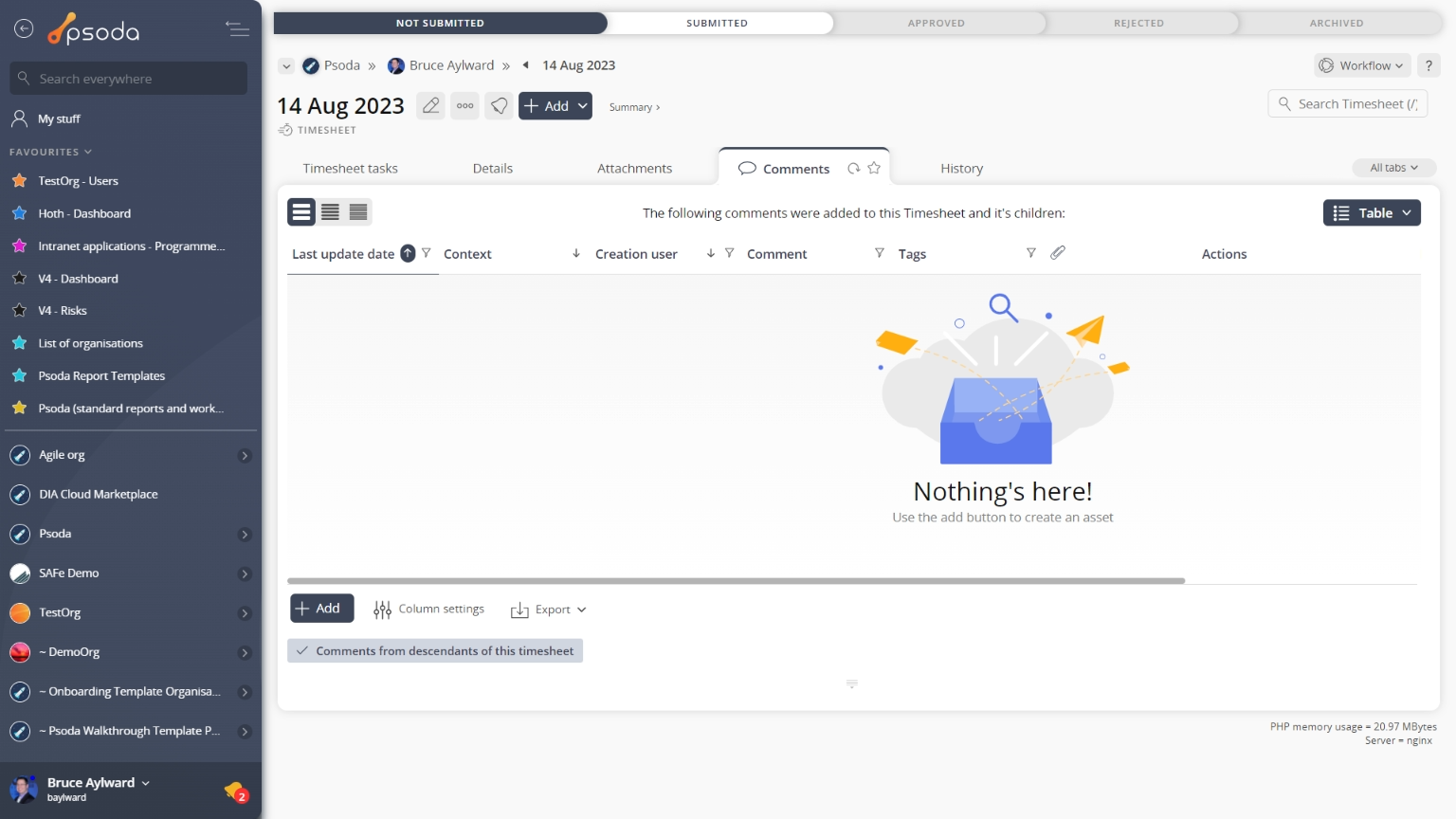
Figure 1 – Timesheet view page
The top header area allows you to Attachments
Attachments
This tab shows an asset listing of all of the attachments that have been added to this timesheet, as shown in Figure 2. By default, this table will present you with a number of details about the attachments such as the file’s name, attachment type, view the version and access a download link.
From the Actions column of this attachments table, you can act on individual attachments by 
Figure 2 – Timesheet attachments tab
Note that you can customise your table view by clicking the Comments
Comments
This tab shows an asset listing of all of the comments that 
Figure 3 – Timesheet comments tab
Note that you can customise your table view by clicking the Details
Details

Figure 4 – Timesheet details tab
This tab shows the details for the selected timesheet including the total number of hours logged for each day as well as the week total, as seen in Figure 4. History
History
This tab shows shows some basic history of the timesheet, as shown in Figure 5. By default, this tab will present you with a number of details about the timesheet’s history such as the creation date, creation user, last update date and last update user. If the timesheet has been changed then this section will also show a table of all the changes that has been made, including the date of each change, the field changed, the value before the change and the user who made the change.
Figure 5 – Timesheet history tab
Note that you can customise your change table view by clicking the edit button at the bottom of the change table. Here, you can also export this list of changes to
Excel or
CSV files.
 Timesheet tasks
Timesheet tasks
This tab shows an asset listing of all of the tasks that have been added to this timesheet including the time logged for each day of the week against each task, as shown in Figure 6. By default, this table will present you with a number of details about the timesheet tasks such as, it’s context (if applicable), reference, a breakdown of days of the week, the week’s total, total charge and progress. If you click on the link under the reference column, you will navigate into the selected timesheet task’s view page.
From the Actions column of this comments table, you can act on individual comments by 
Figure 6 – Timesheet tasks tab
Note that you can customise your table view by clicking the edit button at the bottom of the comment table or navigate to this same spot to
add more comments to this timesheet. Here, you can also export this comment list to
Excel or
CSV files.
 Workflow timeline
Workflow timeline
This tab shows you a table containing each of the state transitions that have been applied to this timesheet on the applied workflow. Note that you can customise your table view by clicking the  Figure 7 – Timesheet workflow timeline tab
Figure 7 – Timesheet workflow timeline tab
Below the state transition timeline table, you will be presented with a visual breakdown of the timeline in a GANTT chart, as shown in Figure 7.